These reviews are meant to give a personal, hands-on experience by a professional photographer, and do not go into all the equipment specifications readily available elsewhere on the internet.
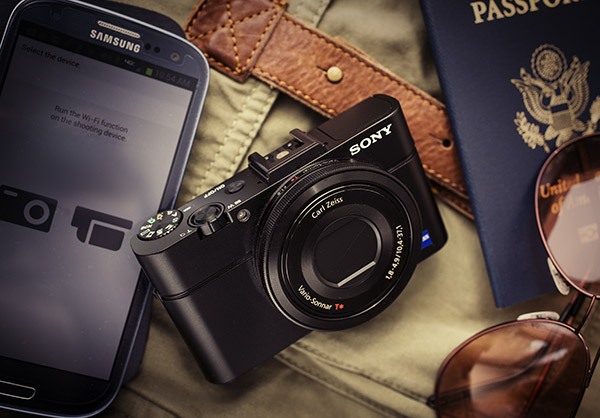 |
| The Sony RX-100II camera shown here next to a Samsung Galaxy smart phone running the Playmemories software APP providing a WiFi connection between camera and phone. You can control the camera from the phone and upload images from the camera to the phone as a pass-through to uploading on social media or sending by text or email. |
Ever since it was introduced the Sony RX-100 series camera has been one of my favorites. It directly fills a need most pro photographers have of wanting a carry-around digital camera that is pocketable yet sophisticated enough to achieve pro quality image results. Sony's new Cyber Shot DSC-RX100 II (M2) camera is similar in size to many point-and-shoot cameras, but comes with a large 1" sensor (same size as the sensor in Nikon's new CX series cameras), Carl Zeiss 10.1-37.4mm (28-100mm equivalent) zoom lens, and is capable of supplying RAW image files of a very high quality. This latest version, the RX-100 II offers some added features to the earlier model, which so far continues to remain in the Sony lineup at its original price. This new model is priced at $748, whereas the older one is listed at $648. What does the extra $100 buy?
The new model comes with a hot shoe on top. This will accept several Sony accessories: the electronic viewfinder, external flash, or stereo microphone. For me the electronic viewfinder is the more appealing option, although it is going to significantly bulk up such a tiny camera. The Remote Muilti-Terminal, in addition to connecting the camera to a computer via USB, also accepts the
Sony Remote Control. This operates as a cable release but can also control several camera functions such as zoom and exposure.
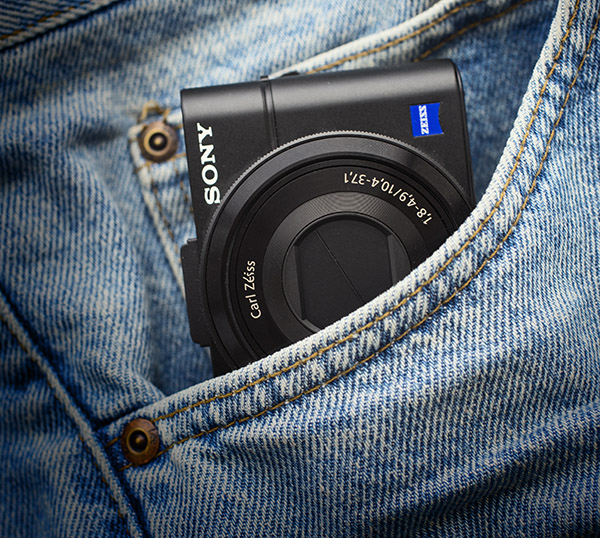 |
| The RX-100II is definitely a pocketable camera despite the large size of its sensor. There is no excuse for not having this camera with you when you need to grab a quick, pro-quality image spur of the moment. |
Sensor size is the most defining contributor to digital image quality. The standard sensor put into most point-and-shoot cameras is 1/1.7". The 20.2MP RX100II 1" sensor area is 2.76 times larger even though the camera itself is the same size as most point-and-shoot cameras. The base format of the RX100II is a 3:2 proportion, which is the same as 35mm full-frame cameras, but 4:3, 16:9, and my personal favorite, 1:1, are also available. I found myself setting the camera to shoot both RAW and jpg at the same time, and usually set the jpg image to be captured in the black and white creative style and 1:1 square crop. This way I have the jpg if I want it, while the RAW image remains in full 16-bit color with a full 3:2 size if I want to take advantage of it later.
The sensor in the new model, while the same size as the older one, is a redesign with back-illumination that makes it more sensitive in low light situations. The ISO on the new model is rated at 160-12500 as opposed to a top standard ISO of 6400 on the former model. Of course these high ratings are not very realistic if your goal is producing pro-quality images. Most pro cameras top out at a practical high of ISO 3200. Yes, they can be used higher, and will produce a recognizable image, but the image quality will be severely downgraded by noise and lack of detail that will require considerable post-processing work to correct. Most photographers I know, myself included, try to maintain a high threshold in the ISO 1600 range.
A complete series of high ISO tests from 400-12,800 with downloadable high res sample files from the RX-100 II are shown on a later blog post, and can be accessed by
clicking here.
A most important benefit of low light sensibility is that the camera can focus quicker and more accurately under these adverse circumstances.
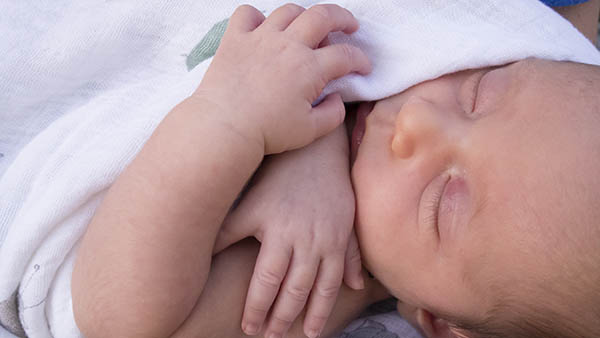 |
| This photo of the baby was actually taken at night with very little available light and an ISO of 3200. The camera had no trouble quickly finding focus in the low contrast area of the eye lashes and the image is over all sharp. |
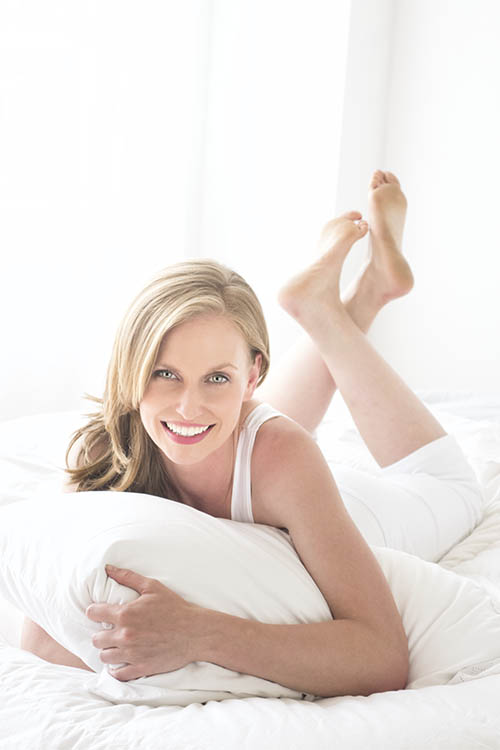 |
| I was photographing this model in my daylight studio and decided to give the RX-100II a try at it. This situation is entirely backlit by strong window light. As a result, there is very low contrast in the model's face. Many cameras have a difficult time pulling a pinpoint focus on the eyes. The RX-100II was able to do it easily, although I did have to set the the camera to over expose by a full stop because the auto-exposure naturally tried to darken the overall scene. It is in a situation like this that the sensitivity of the new sensor in the RX-100II shows its stuff. |
While it might have a look of point-and-shoot simplicity, the RX100II is equipped with plenty of conveniently placed pro options. A dial on top of the camera selects the shooting mode, which include the familiar M (manual), A (aperture priority), S (shutter priority), and P (full program) in addition to a simpler iAuto mode. The four focus modes include AFC (continuous), AFS (single-shot), MF (manual), and DMF (auto-focus with allowance for manual correction).
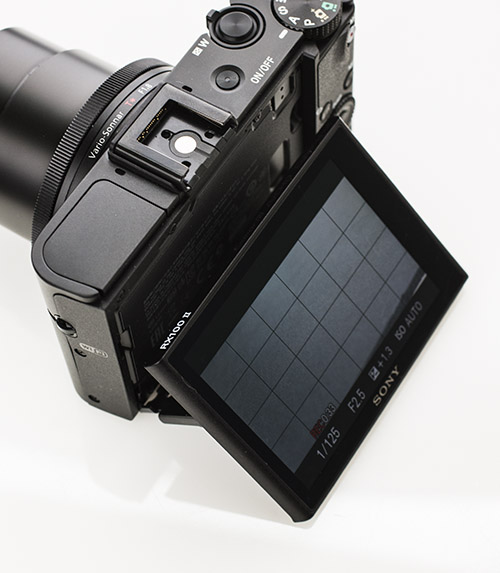 |
| Another new feature on this model is the up and down tilting screen. |
The lens is a Carl Zeiss f/1.8-4.9 zoom with a 10.4-37.1mm ( a 2.7 image multiplier factor gives a 28-100mm equivalent) optical range. The f/1.8 aperture is nice for low light but quickly fades to f/4.9 at the longer focal length. The zoom can now be set to operate continuously or in step mode with stops for 28, 35, 50, 70, and 100mm equivalents. I find this feature to be very handy and more exacting than attempting to fine tune a zoom adjustment by racking the lever back and forth manually.
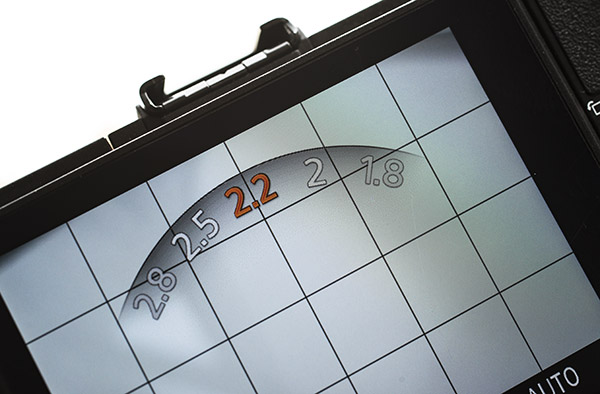 |
| You can change the aperture either by turning the ring on the lens itself or by using the command dial on the rear of the camera. |
The menus are convenient and intuitive to use. The movable ring around the lens can be programmed to sever different functions that are easily called up by the fn (function) button on the rear of the camera. Frankly, this is one of the easiest cameras I have ever used and made all the more so by incorporating features that are most expected by professional photographers.
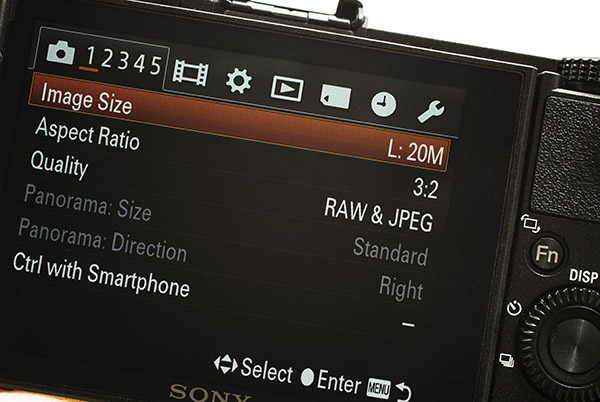 |
| The menu system is extensive, but clear and easy to navigate. |
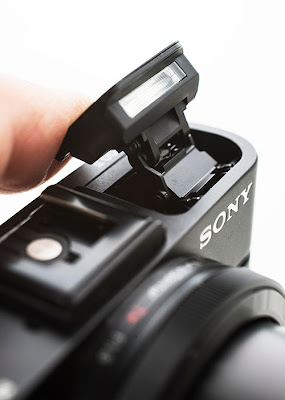 |
| The built-in, pop-up flash can be manually tilted allowing for a soft bounce flash fill light. |
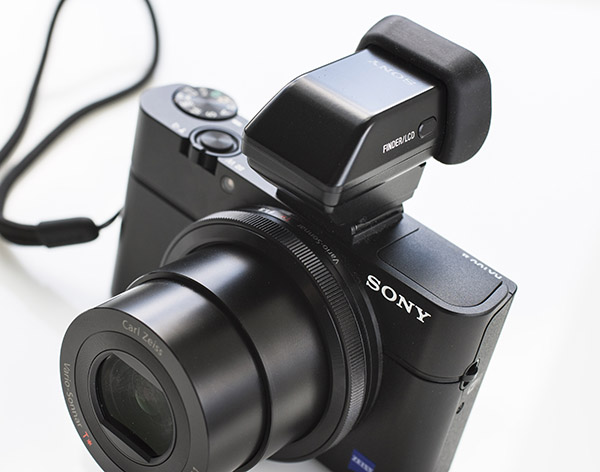 |
| The hot shoe accepts the same electronic viewfinder that fits on the Sony RX1 camera. |
Another feature that I have grown to love on the earlier model is something still available with the new model. It is that the built-in flash can be tilted with your finger to adjust the angle of the light to either bounce it off the ceiling or simply lift some of the light off of the foreground. Tilting it back just a bit takes enough light off the foreground to provide a more natural, even transition from front to back. Such a feature comes in handy when, for instance, your subject is sitting across a table from you an you want to add some fill light without burning the foreground with excess light.
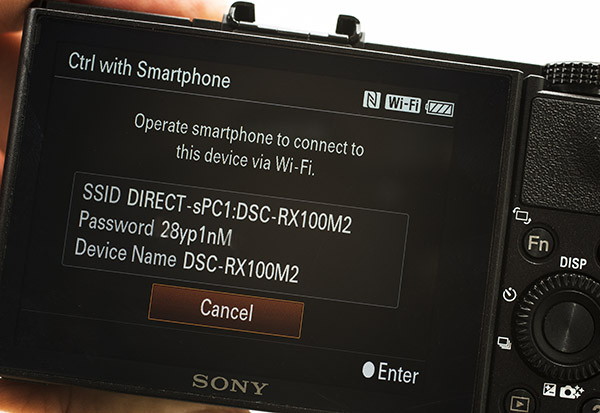 |
| The procedure for connecting the camera and phone is to first initiate the Playmemories APP on the phone, and enter the password into the phone's WiFi setting. Once the software is running on the phone, it will tell you to turn on the camera WiFi connection, which you select from the menu. If a few seconds the two are connected. You only have to insert the password once. |
The RX-100II comes with built-in WiFi connectivity to an Android smart phone. You can download the Sony Playmemories phone APP for your smart phone. Once the camera and phone are connected through WiFi, you will be able to see through the camera as if you were operating it. From the phone, you can operate the zoom feature on the lens, turn the flash or shutter on and off, and snap the shutter. A low res image is then transferred to the phone while the higher res version resides on the camera. Of course, you can then upload the image on your camera to social media or send it by text or email. You can also use the WiFi to simply transfer any image from the camera to the smart phone for further uploading to social media.
I am planning to acquire a quadcopter and mount the Sony RX-100II to it for taking aerial photos and video. Being able to remotely view the images from my phone will hopefully allow me to operate the camera while it is in the air. The RX-100II is a perfect candidate for this type of photography due to its light weight, small size, and high quality sensor.
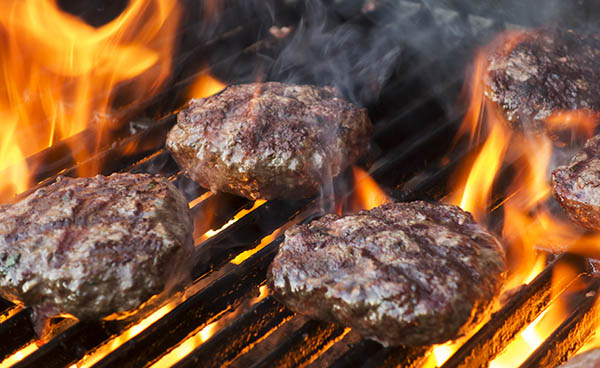 |
| Taken in low light at ISO 1250 this is a difficult situation for a camera to autofocus. It is dark, low in contrast, and has constantly changing smoke and flames. |
The lens can focus down to 1.97" (5cm) at its wide angle setting, which is equivalent to 28mm. This is even closer that the close-up range of its big brother, the RX1, in its closeup mode.The shots below were taken at the closet setting.
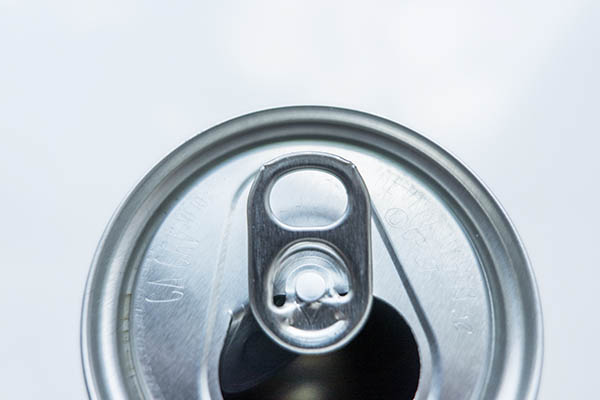
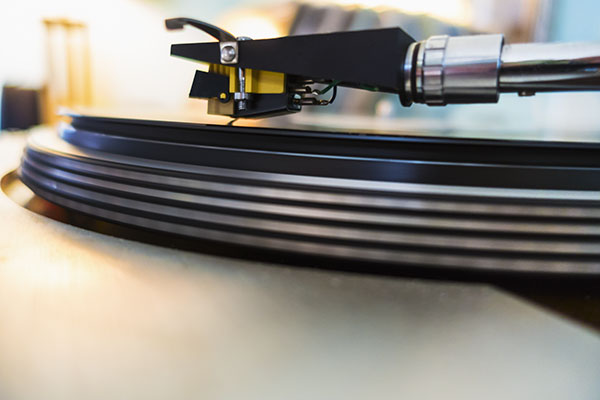 |
| The camera has a nice close focus look due to its very wide open f/1.8 maximum aperture. |
The video capabilities of the RX-100II have also been increased to include 24 fps in addition to the 60fps and 30fps of the previous model. Because of the image quality of its large sensor and convenience of its small size this camera will be very handy tool for shooting video in tight quarters or where you wouldn't want to risk shooting with an expensive DSLR.
In the photo about a Sony RX-100II is shown here next to one of the first Leica models ever made to illustrate that good things and high quality can come in very small packages. In its own way, the RX-100II is a ground-breaking technology much like the early Leica in that both freed the photographer from the limitations of working with cumbersome equipment.
It is not that a small camera such as the RX-100II should be the only one a photographer relies upon, but it does serve a useful purpose as an addition to a professional camera kit. I am looking forward to seeing additional accessories coming on the market to make this camera even more useful. Nauticam already makes an RX-100 underwater housing. So does Ikelite. Why risk a multi-thousand dollar DSLR underwater when you can take this smaller $748 model 20mp camera underwater instead?
A filter adapter kit, the Sony VFA-49R1, allows 49mm filters, such as the Sony circular polarizer, to be mounted on the lens.
 |
| This early morning photo shows the completed World Trade Center in its downtown environment. Taken with the RX-100II in its 16:9 crop mode and equivalent 28mm focal length. |
The type of new features added to this model show that Sony is aware that the camera has caught on with more sophisticated users who require professional accessories. The Sony RX-100II can deliver a very top quality, pro level image from a tiny package. The added features and accessories now make it an even more attractive package for any serious photographer.
If you are planning on purchasing this camera, you can help support this site at no extra cost to you by purchasing from one of our affiliate sellers listed below -- and thanks for your support.
Sony Cyber-shot DSC-RX100 II camera can be ordered from: BH-Photo Amazon


















































